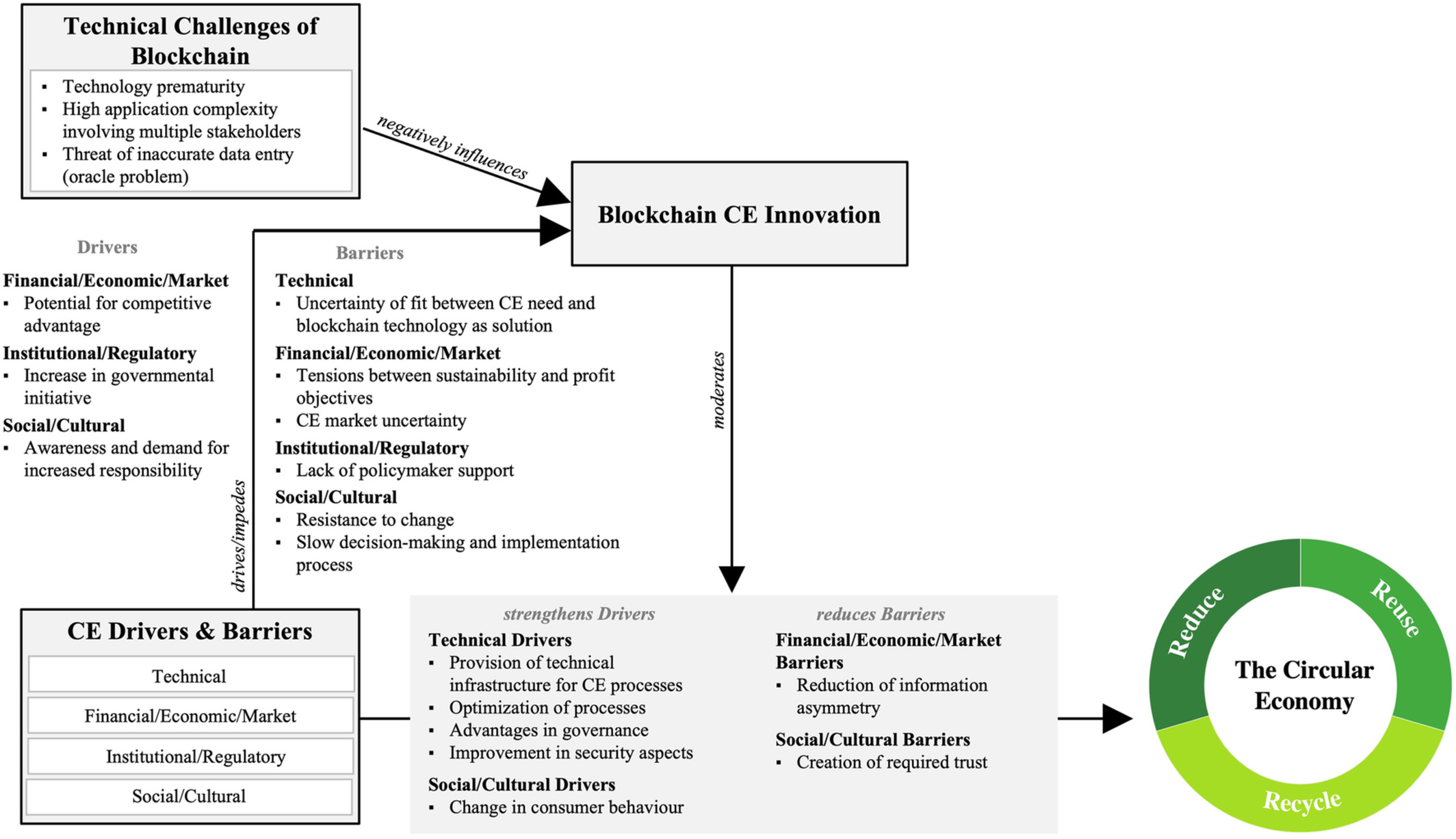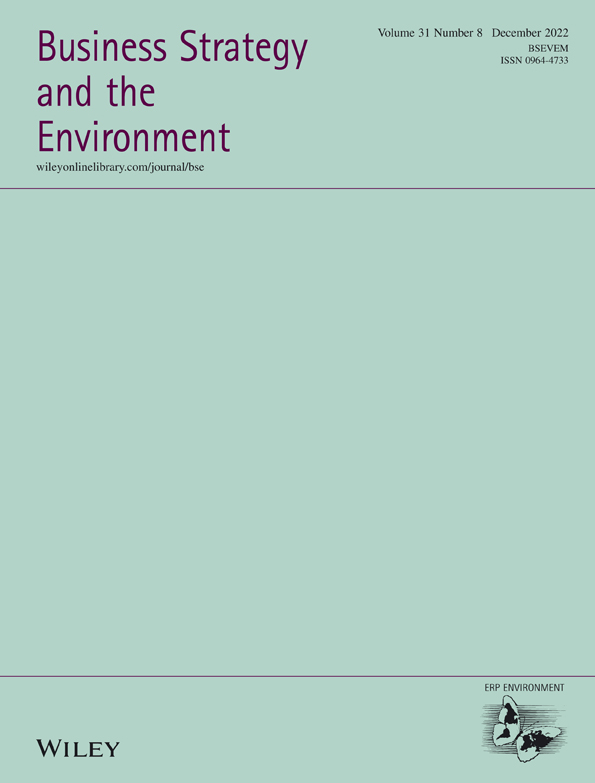Our article on blockchain-based innovations for the circular economy has been recently published in the special issue of Business Strategy and the Environment and it’s open source. In this paper, we analyze the role and potential of the technology for the transition to a circular economy and developed a theoretical model of drivers and barriers.
What is the Circular Economy?
 The concept of the Circular Economy is still evolving. The term was originally coined by the Ellen MacArthur Foundation in 2013, describing it as an
The concept of the Circular Economy is still evolving. The term was originally coined by the Ellen MacArthur Foundation in 2013, describing it as an
industrial economy that is restorative or regenerative by intention and design.
The goal of the circular economy is to transition from today’s linear economic model to a closed-loop economy based on resource regeneration and ecosystem restoration. Hence, instead of the linear paradigm (i.e.,take, make, dispose) that focuses on continuous growth, the circular economy postulates a closed loop within the planet’s ecological limits based on three main principles: reduce, reuse, and recycle. Research has shown that innovation can be crucial in transitioning to a circular economy.
How can blockchain technology support the transition?
We identified five categories through which blockchain-based innovations could support the transition to a circular economy based on interviews with 18 experts and data triangulation with peer-reviewed literature. First, Blockchain-based supply chain management systems can facilitate traceability in complex supply chains and increase responsible buying behavior by providing trusted provenance knowledge (e.g., the origin of harvested timber in an immutable record). Second, in waste management, blockchain can support waste exchange platforms and recycling schemes through smart contracts. Third, blockchain can support the use of renewable energies through peer-to-peer energy trading platforms and source verification systems. Although many blockchain applications (e.g., Bitcoin) still rely on energy-intensive Proof-of-Work consensus with potentially negative environmental consequences, the technology is increasingly maturing and further transitioning to more sustainable consensus mechanisms (e.g., proof-of-stake). Fourth, blockchain-based token rewards systems incentivize sustainable behavior (e.g., the Plastic Bank and waste collection schemes). And lastly, blockchain could disintermediate the sharing economy and significantly decrease transaction costs with peer-to-peer smart contracts for sharing assets.
Our findings
In addition to identifying and clustering blockchain-based innovations, we developed a theoretical model of relationships between blockchain-based innovations and drivers and barriers of the Circular Economy. The model is based on empirical data (and not conceptual or anecdotal as previous research did) and should support future research in the domain to understand the relationships. Our main finding is that blockchain can be the proper technological infrastructure for many circular economy applications, whereas it cannot be a panacea for solving all inherent challenges of transitioning to a Circular Economy (e.g., the trade-off between sustainability and profit objectives or lack of governmental support). In some cases, blockchain-based innovations can moderate drivers (i.e., increase) and barriers (i.e., decrease) of the transition to a circular economy. However, a significant challenge that spans across many blockchain applications is the so-called Oracle problem: oracles (in reference to the ancient Greek gods) are the trusted gateway between a blockchain and the physical world. These oracles process external and deterministic data and convert it to a format to be stored as an immutable record on the blockchain. It becomes clear that (as in any other translation of analog to digital data) the transmission of the data requires trust in the gateway. A solution for this is increasing the automation of processes and the technological convergence with Internet of Things technologies (e.g., sensors and RFID chips) to reduce the risk of inaccurate data entry. At the same time, additional external data sources (e.g., GPS) can be harnessed to triangulate data entries.
This is our theoretical model of relationships:

If you want to learn more about this research, blockchain technology, the Circular Economy, or avenues for future research in this area, you can access the open source article from Business Strategy and the Environment here:
